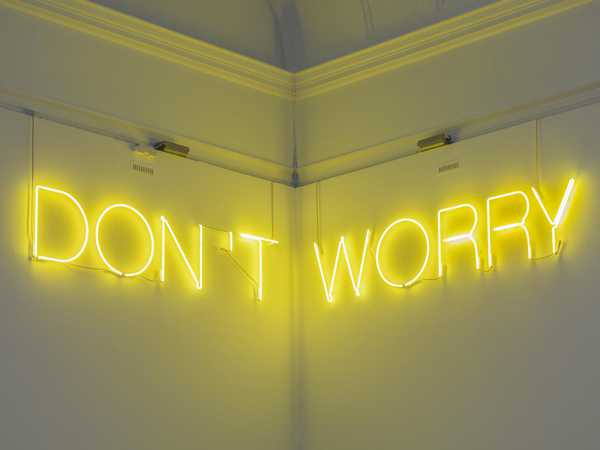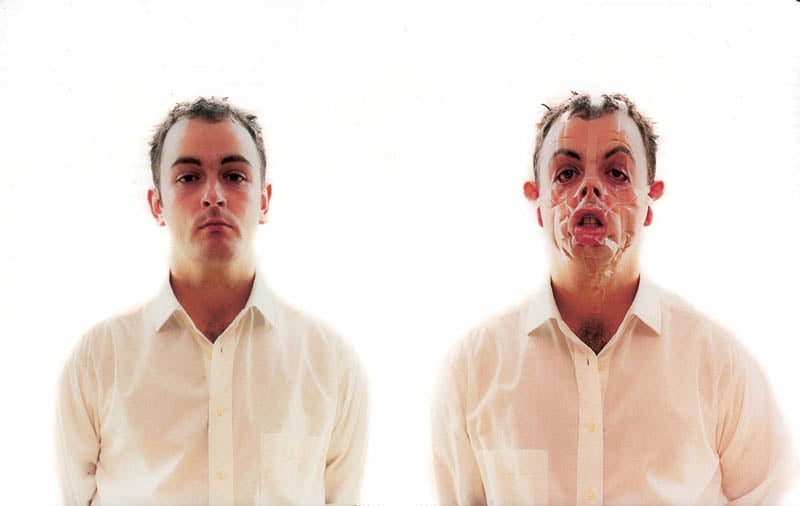Our love is like the Flowers, the Rain, the Sea and the Hours
2003 - Installation (Installation)
Martin Boyce
In the installation Our Love is like the Flowers, the Rain, the Sea and the Hours, Martin Boyce uses common elements from public gardens – trees, benches, trashbins– in a game which describes at once a social space and an abstract dream space. The trees, unique sources of light in the exhibition space, produce their own environment. These sculptures, as if extracted from a set, are enough to suggest an atmosphere, a landscape, or a movie. Their nocturnal depiction is ambivalent, hovering between poetic beauty and the potential threat of a park at night. Romantic views of nature blend with modern ideas of optimism and equality. However, from it emerges from a deep anxiety or paranoia. The perceived space cannot be localized inside a certain reality, rather it pertains to the everyone’s imagination. Therefore, in the installation, the viewer produces what he sees around him with his own eyes and own journey through the space. Its space becomes the psychological and emotional space of an idler. When describing the piece, Boyce has stated that the sculptures move far from the visible and the material generating more of an emotional state rather than theoretical reflection. “My installations draw upon imaginary and fragmented landscapes. When I introduce an object within an installation, it recalls the world from where it is derived from, like a fragment, it is a exploded variation.” The universe of Martin Boyce is multifarious, extracting fragments of reference as varied as architecture, design, cinema, Scottish literature, Japanese poetry, etc. His forms do not fit perfectly within one category and exist more as ghosts of meaning. For instance, a sculpture can distinctly resemble a tilted ping-pong table although all the elements deviate from such a table to a great extent. Concrete trees by Joel and Jan Martel made in 1925 for the Decorative Arts Exhibition in Paris are a recurrent theme throughout the work of Boyce, as well as replicas in “Electric trees and telephone booth” (2006) and formal traces in works such as “We are still and reflective” (2007). The artist sees these objects as a perfect “collapse” between architecture and nature. The sculptures, consisting of trees, gates, vents, signs, dot the exhibition space, becoming a stage. While the forms and materials from were conceived to be functional, Martin Boyce uses them less as objects of representation and more as objects of emotion. Their titles, extracted from fragments of poems, pop songs, slogans, exist as a way to “inhabit” the installations and poeticize the real.
“My installations draw upon imaginary and fragmented landscapes. When I introduce an object within an installation, it recalls the world from where it is derived from, like a fragment, it is a exploded variation.” The universe of Martin Boyce is multifarious, extracting fragments of reference as varied as architecture, design, cinema, Scottish literature, Japanese poetry, etc. His forms do not fit perfectly within one category and exist more as ghosts of meaning. For instance, a sculpture can distinctly resemble a tilted ping-pong table although all the elements deviate from such a table to a great extent. Concrete trees by Joel and Jan Martel made in 1925 for the Decorative Arts Exhibition in Paris are a recurrent theme throughout the work of Boyce, as well as replicas in Electric trees and telephone booth (2006) and formal traces in works such as We are still and reflective (2007). The artist sees these objects as a perfect “collapse” between architecture and nature. The sculptures, consisting of trees, gates, vents, signs, dot the exhibition space, becoming a stage. While the forms and materials from were conceived to be functional, Martin Boyce uses them less as objects of representation and more as objects of emotion. Their titles, extracted from fragments of poems, pop songs, slogans, exist as a way to “inhabit” the installations and poeticize the real. Martin Boyce was born in Glasgow, Scotland in 1967 where he lives and works today.
Colors:
Related works of genres: » scottish contemporary artists

© » KADIST
Andrew Grassie
2009In 2008, Grassie was invited by the Whitechapel Gallery to document the transformation of some of its spaces...

© » KADIST
Charles Avery
2012Since 2005, Charles Avery has devoted his practice to the perpetual description of a fictional island...

© » KADIST
Martin Creed
2003This photograph of Martin Creed himself was used as the invitation card for a fundraising auction of works on paper at Christie’s South Kensington in support of Camden Arts Centre’s first year in a refurbished building in 2005...

© » KADIST
Douglas Gordon
2004Douglas Gordon’s single-channel video The Left Hand Can’t See That The Right Hand is Blind, captures an unfolding scene between two hands in leather gloves—at first seemingly comfortable to be entwined, and later, engaged in a struggle...

© » KADIST
Douglas Gordon
2002Blind Spencer is part of the series “Blind Stars” including hundreds of works in which the artist cut out the eyes of Hollywood stars, in a symbolically violent manner...

© » TATE EXHIBITIONS
Martin Creed
Martin Creed | The Dick Institute Experience the work of one of this country’s most ingenious, audacious and surprising artists at the Dick Institute ARTIST ROOMS Martin Creed presents highlights from the British artist’s thirty-year career...

© » KADIST
Douglas Gordon
1996In Monster (1996-97), the artist’s face becomes grotesque through the application of strips of transparent adhesive tape, typical of Gordon’s performance-based films that often depict his own body in action...



